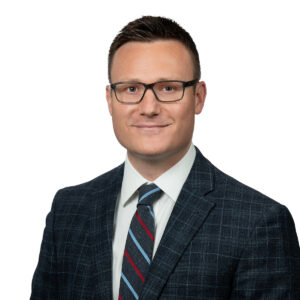
Diagnosing Hip Pain From a Labral Tear
Diagnosing the cause of hip pain can be a challenge because the hip is a complex joint. Hip pain caused by impingement and subsequently a labral tear occurs in both males and females, usually between the ages of 16 – 45. It tends to be more common in females and often affects athletes or individuals with an active lifestyle. Certain sports – from soccer, hockey, ballet, lacrosse, basketball, softball, gymnastics, martial arts, and figure skating – can put individuals at a higher risk for a labral tear and femoroacetabular impingement.
The onset of hip pain can occur gradually over time or it can come on suddenly due to an injury. Younger patients often suffer an acute injury and feel a sudden and sharp pain in the groin area. However, sometimes patients have no idea how the injury occurred but have pain when the hip is flexed forward and internally rotated (when the toes and knees are rotated inward). Older patients often notice pain with activities such as yoga or just sitting.
Pain from a torn labrum is generally felt in the groin in the front of the hip – sometimes described as a “C” sign distribution of pain from the top of the groin in the front of the leg to the back part of the hip. Alternatively, some people describe the pain in the area where they would place their hand in their front pants pocket. Some patients may also have pain radiating to the back or side which often gets worse when flexing the hip forward. The pain is usually worsened with activity and is sharp, sometimes described as a knife stabbing them in the groin. Patients may also experience clicking or popping that is felt deep inside the hip. The pain, caused by impingement and subsequent tearing of the labrum, occurs when the femoral head (ball) and the hip socket (cup) are pinching the labrum in between.
When a patient has hip pain, their diagnosis is often delayed because there are very few doctors who are specifically trained to care for patients with femoroacetabular impingement and labral tears. Often patients see an athletic trainer, a physical therapist, their primary care doctor or even a non-operative sports medicine doctor before they end up with an orthopedic surgeon who is a hip specialist and an expert in diagnosing and treating this injury. Many times this injury is misdiagnosed as a hip flexor strain. Ideally, individuals who are experiencing hip pain should start by getting a referral from their athletic trainer or primary care doctor to see a physical therapist. If the pain doesn’t resolve or improve after 4 – 6 weeks they should see a hip specialist to be evaluated. If it is suspected that the pain may be a result of a labral tear, the doctor will order a special type of MRI with contrast, called an MR arthrogram, to provide an accurate diagnosis. If a labral tear is found, the doctor may offer an additional course of therapy or provide an injection in the hip to confirm the diagnosis and help with the pain. If these steps do not provide lasting relief, then minimally invasive (arthroscopic) labral repair may be considered.
It is important to address the injury, because if left untreated it can lead to micro-instability in the joint, cartilage thinning, or damage to the socket or the ball – all of which may eventually lead to early arthritis. Studies done on hockey players have shown that individuals who leave this injury untreated can have arthritis set in as early as their mid-thirties to late-forties.
Most studies show good to excellent outcomes after hip arthroscopy, with most patients returning to sports at their pre-injury level between 6-7 months after surgery. Additionally, patients tend to have increased range of motion and less discomfort with hip flexion, cutting, and pivoting motions. Surgery generally eliminates the groin pain and gets rid of the clicking, popping and catching in the hip.
If you or someone you know has been suffering with non-arthritic hip pain that is the result of an injury, we recommend seeking out evaluation by an orthopedic surgeon who is trained in sports medicine and specializes in hip preservation. Dr. Dan Haber is an orthopedic surgeon who specializes in sports medicine and hip arthroscopy at Panorama Orthopedics & Spine Center. He trained at the premiere center for hip arthroscopy – the world-renowned Steadman Clinic and Steadman Philippon Research Institute in Vail, Colorado.
Meet Panorama’s Hip Preservation Team

Dr. Mike Ellman
Dr. Michael Ellman
Dr. Ellman is an integral part of the Denver sports medicine team at Panorama Orthopedic and Spine Center. Dr. Ellman, most recently with the Steadman Clinic in Vail, is a fellowship trained, board-certified orthopedic surgeon specializing in hip, knee and shoulder injuries.

Dr. Dan Haber
Dr. Daniel Haber
Dr. Haber is a hip arthroscopist at Panorama Orthopedics & Spine Center, He trained at the world-renowned Steadman Clinic and Steadman Philippon Research Institute in Vail, Colorado. , where he learned advanced arthroscopic and reconstructive surgical techniques for treating labral tears in the hip.

June 23, 2016. Panorama. Ronald R. Hugate. Head shot. Doctor Photo by Ellen Jaskol.
Dr. Ronald Hugate
Dr. Hugate, is a board-certified orthopedic surgeon who specializes in orthopedic oncology, hip preservation, complex joint reconstruction, and limb salvage. Dr. Hugate is considered a leader and innovator in the treatment of complex orthopedic problems.